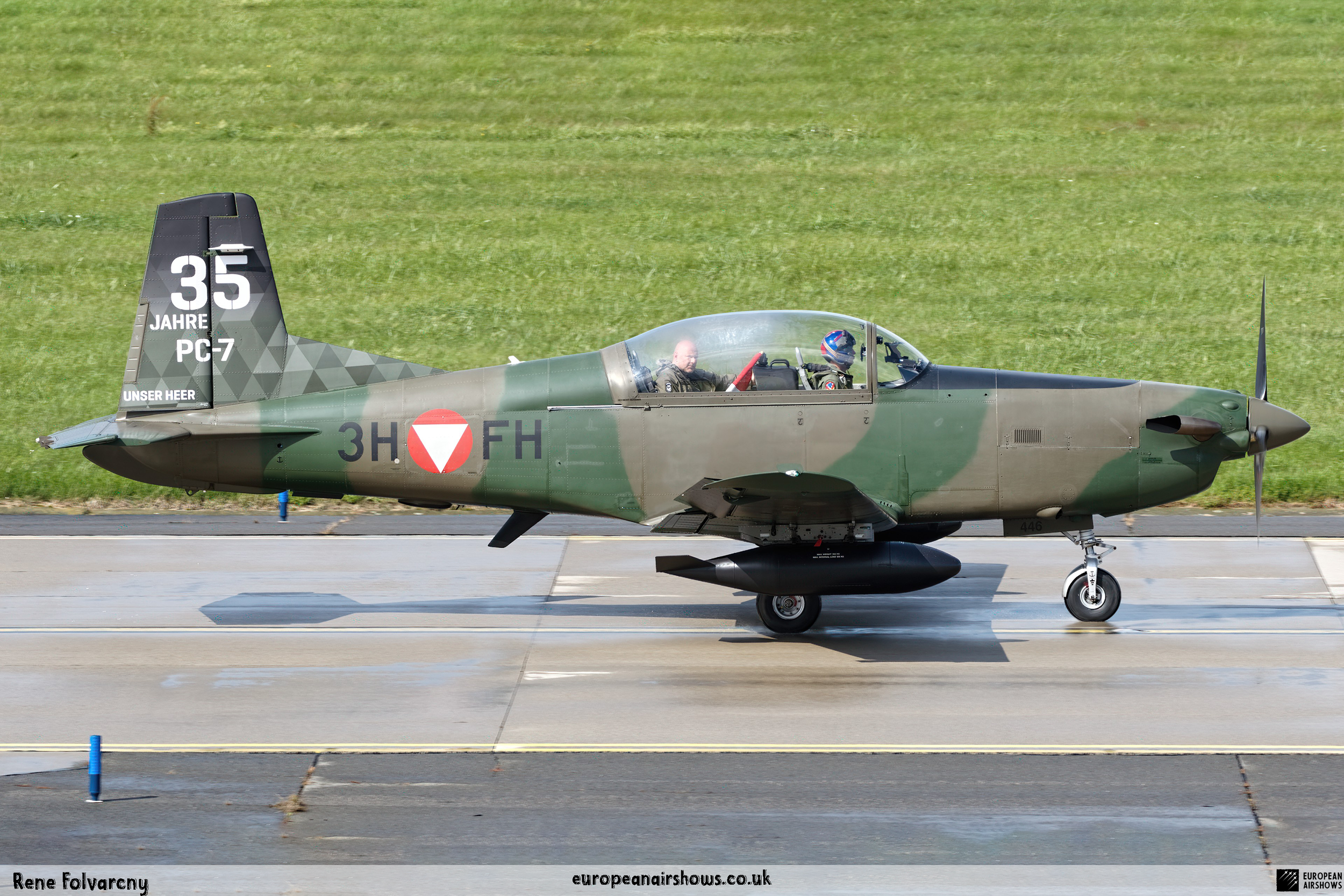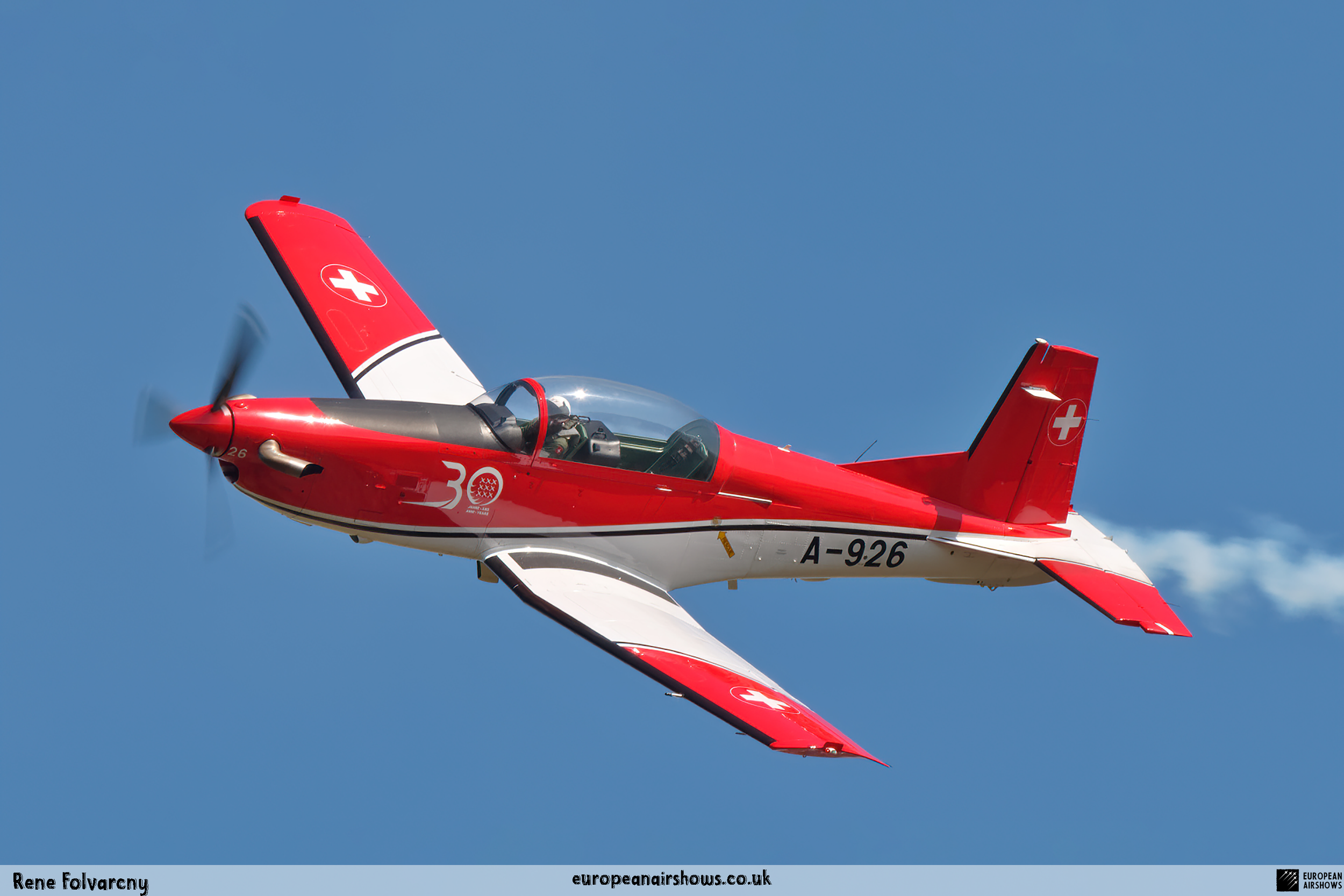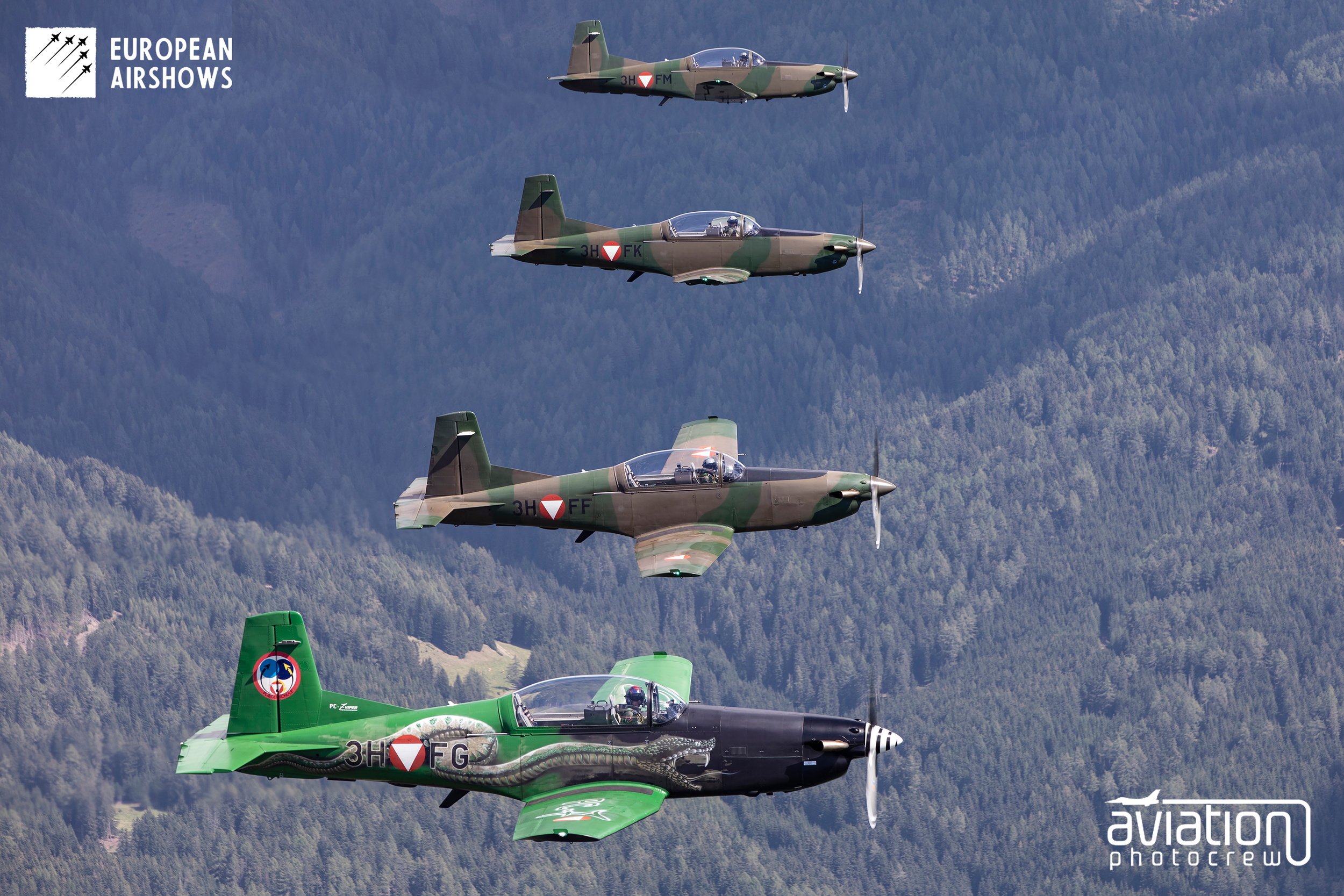
April 12 / Pilatus PC-7 first flight
First Flight 12 April 1966
Pilatus PC-7
The Pilatus PC-7 Turbo Trainer is a low-wing tandem-seat training aircraft, designed and manufactured in Switzerland by Pilatus Aircraft. The aircraft is capable of all basic training functions, including aerobatics, instrument, tactical, and night flying.
The PC-7 was developed from the preceding piston-powered Pilatus P-3, largely differing by the adoption of a turboprop engine, a bubble canopy, and a new one-piece wing. Introduced during the 1970s, it has since developed a sizable presence of the global trainer market. The type has been adopted by in excess of twenty air forces as their ab initio trainer, as well as multiple civilian operators. Over one million hours have reportedly been flown by PC-7s worldwide. In addition to training operations, some aircraft are armed and have been used for combat missions by several customers, including Chad, Iran, and Mexico, often in violation of the relevant export agreement between the customer and the Swiss government.
An improved model of the aircraft, the PC-7 Mk.II M, was developed during the 1990s, by combining the newer airframe and avionics from the PC-9 with the PC-7's smaller turbine engine. Reportedly, in excess of 600 PC-7s have been sold to various operators, the majority of which still being in service. In Pilatus' range of aircraft, the PC-7 has been succeeded by the newer PC-9 and PC-21 trainers
Work on what would become the PC-7 commenced during the 1960s. It was based on the earlier piston-powered Pilatus P-3, the initial prototype being produced from the existing prototype P-3, principally differing by the substitution of its Lycoming O-435 engine with a Pratt & Whitney PT6A-20 turboprop power-plant. On 12 April 1966; 57 years ago, the modified prototype performed its maiden flight. However, the PC-7 programme was abruptly shelved following an accident involving the aircraft. The termination of work was reportedly driven by a lack of market interest.
During 1973, it was decided to restart work on the programme; factors for its revival had included the 1973 oil crisis, the launch of the rival Beechcraft T-34C Turbo-Mentor, and the increasing age of existing trainer aircraft. To support the relaunch, another P-3 was obtained from the Swiss Air Force. After modifications, this aircraft first flew on 12 May 1975; 48 years ago. Further extensive modifications followed later in the programme, including the adoption of a new one-piece wing complete with integral fuel tanks, along with an altered tail fin and a bubble canopy. The flight test programme came to a close during Autumn 1977.
On 18 August 1978; 45 years ago, the first production aircraft made its first flight. On 5 December of that year, Switzerland's Federal Office of Civil Aviation (FOCA) issued civil certification for the PC-7; immediately thereafter, initial deliveries of production aircraft commenced to customers Burma and Bolivia. Over time, sales of the PC-7 generated considerable profits, allowing the company to finance the development of further types of aircraft.






